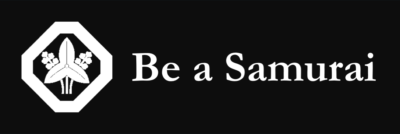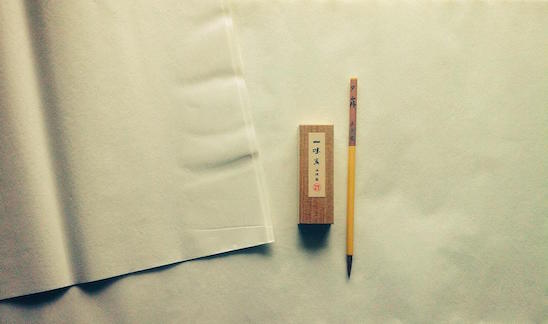
| Communication tool
Shojyō (書状) is a type of Japanese traditional document made with Suzuri 硯, water, Sumi 墨, Fude 筆 and Washi 和紙.
To report a present situation, give orders to troops, authorize a territory to his retainer, etc, Samurai wrote many Shojyō, thus establishing its form.
Suzuri 硯
An inkstone for the grinding and containment of ink.
Sumi 墨
An ink-stick. Made mainly of soot and glue, sometimes with incense added.
Fude 筆
An ink-brush. The bristles are made from the hair of animals – goats, sheep and horses were frequently used to make Fude. The brush handle was often made from wood or bamboo.
Washi 和紙
A paper commonly made using fibers from the bark of the mitsumata 三又 shrub. The word “washi” comes from WA meaning “Japanese” and SHI meaning “paper.” The term is used to describe paper made by hand in the traditional manner.
| Standard, horizontal
Originally Shojyō were formally sent with the main paper called Honshi 本紙 and a white paper called Raishi 礼紙. In the Kamakura period samurai started to use only Honshi in order to economize Raishi. Honshi was a horizontal paper, externally folded along the centerline (the mountain fold), and written on the upper half. When the text was too long, the paper would be rotated 180 degrees and the writing continued on the lower half. This way of writing is called Origami 折紙. The style of writing without a fold is called Tategami 竪紙 [1]. The right side of Honshi is called Sode 袖, the left Oku 奥.
[1] 大藤修, 日本人の姓・苗字・名前, p89-91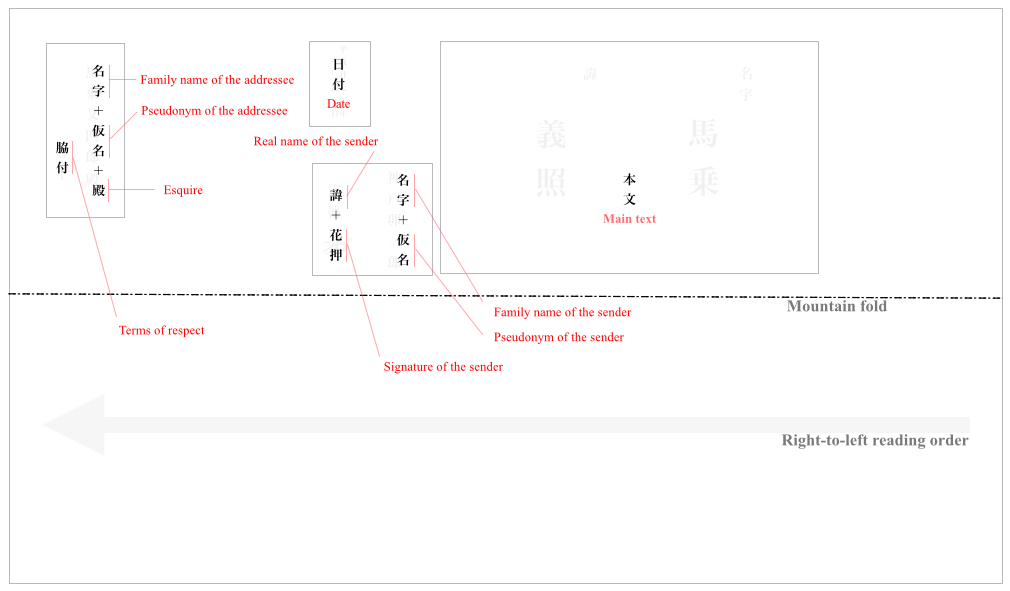
When you write a formal Shojyō, you need not only your family name and true name, but also a pseudonym.
First, the main text was written (the Honbun 本文); next, the family name (Myōji 名字); and then the sender’s pseudonym (the Kemyō 仮名*). The date, the true name (Jitsumyō 実名), and the sender’s signature (Kaō 花押) [2] was placed under the date, followed by one’s family name, the sender’s pseudonym, etc., and so on. Sama 様, Dono 殿, and final terms of respect called Wakitsuke 脇付 were also added.
*especially Kanimei 官位名
(to learn more Kanimei, see “Kemyō, pseudonym, a wide variety” )
[2] 佐藤 進一 , 増補 花押を読む
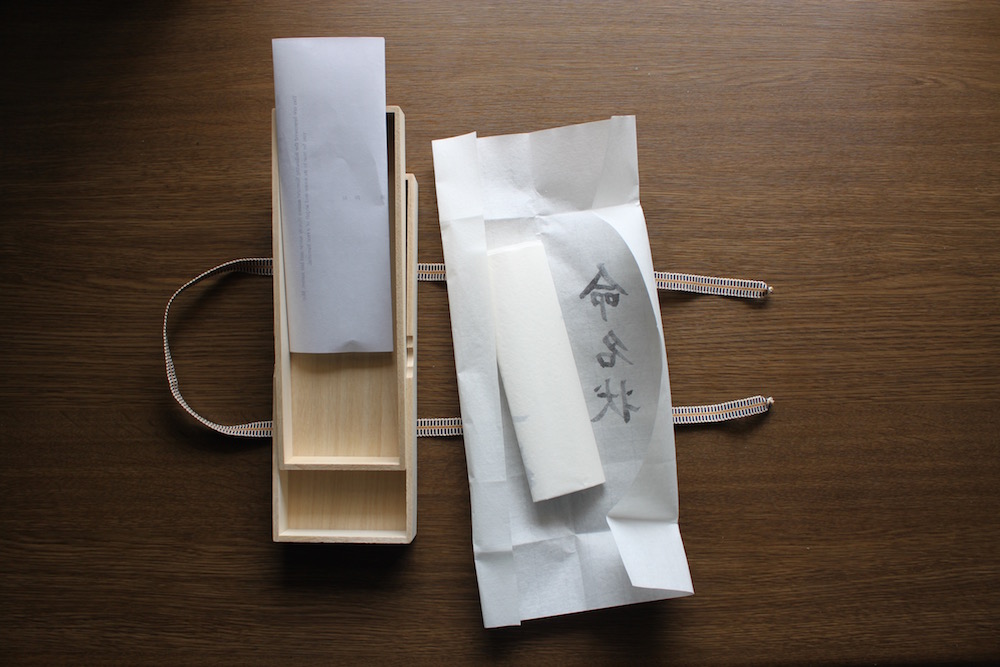
| Wrapped and encased
When crafting your own Shojyō, once you’ve finished writing, check that the ink has dried, fold along the centerline and pack it into shape. Wrap it with a vertical paper called Fushi 封紙 and send.
When you send Shojyō to a person whom you respect, put the Shojyō in a box, tie it with a tape (something like Sanadahimo 真田紐) and give an order to the retainer with the Shojyō.
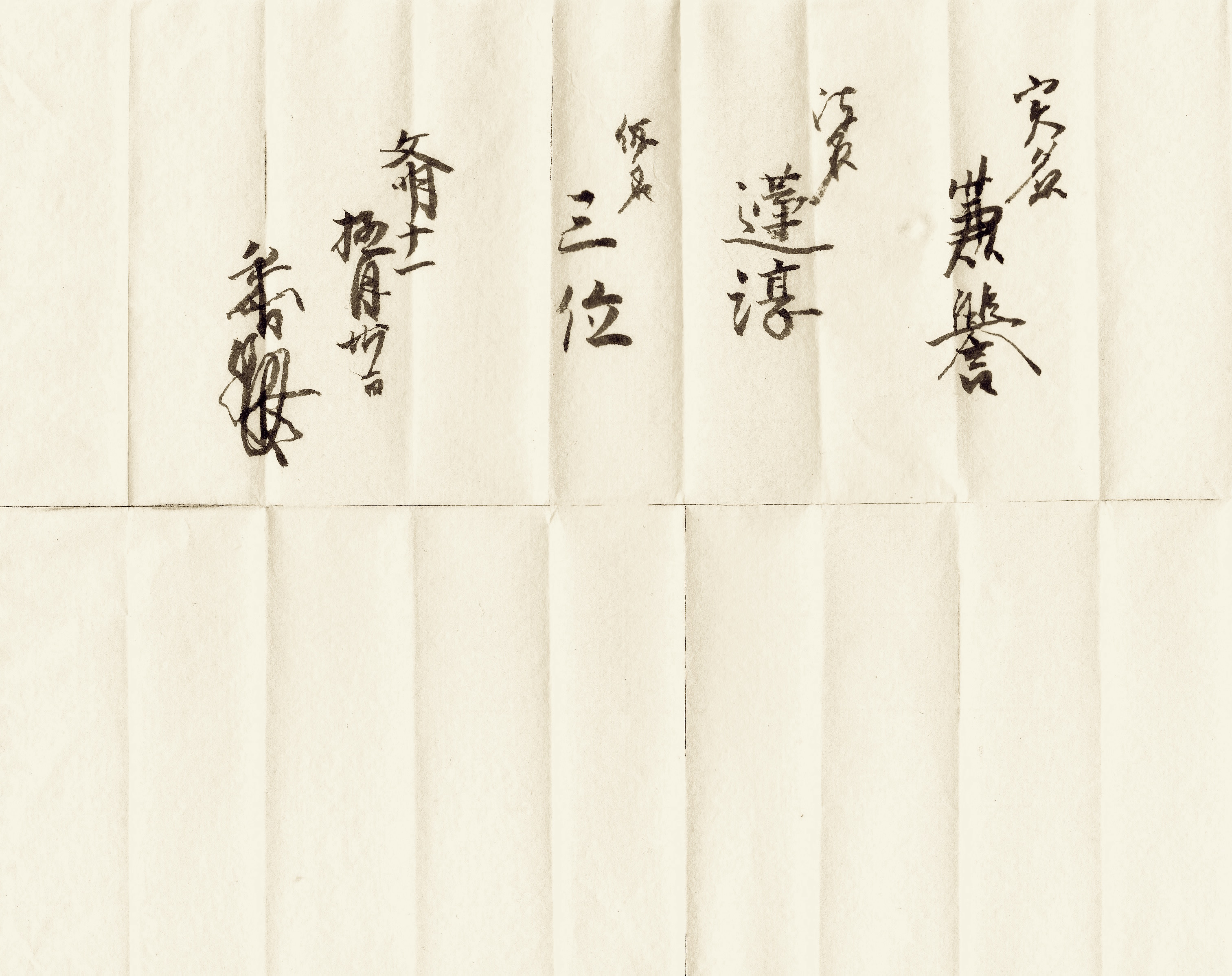
| How to write names
The Samurai Name Certificate is very rare to find in the present era because of its secret nature.
The Shojō style name certificate (learn more *Japanese) is the one that Honganji Rennyo 本願寺 蓮如 made to give and send names to his son. This certificate was apparently made to signify that his son was to now be recognized as an adult.
From left to right, the certificate reads as such:
Real Name: Jitsumyō 実名,
Kenyo: 兼誉,
Buddhist name: Homyō 法名,
Renjyun: 蓮淳,
Pseudonym: Kemyō 仮名,
Sanmi 三位;
Date: 30/12 the 11th year of the Bunmei era 文明十一年十二月三十日;
The signature of sender: Sashidashinin 差出人,
Kenjyu 兼寿
The Samurai Name Certificate issued by “Be a Samurai” is an accurate recreation that adheres to the accredited name certificate according to the information above.


